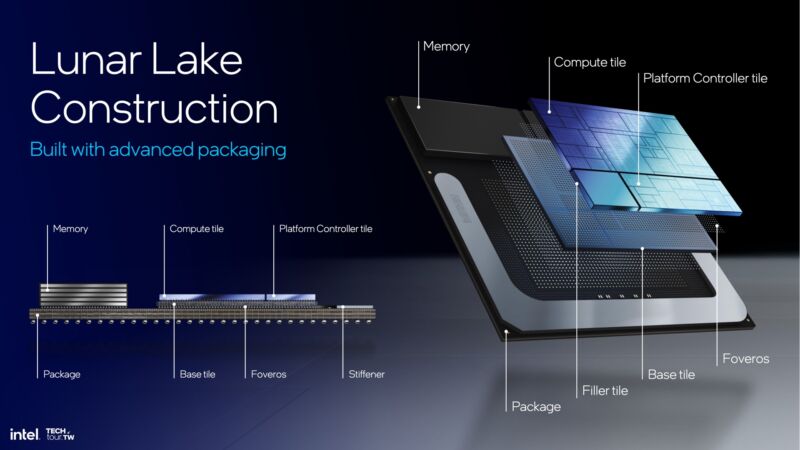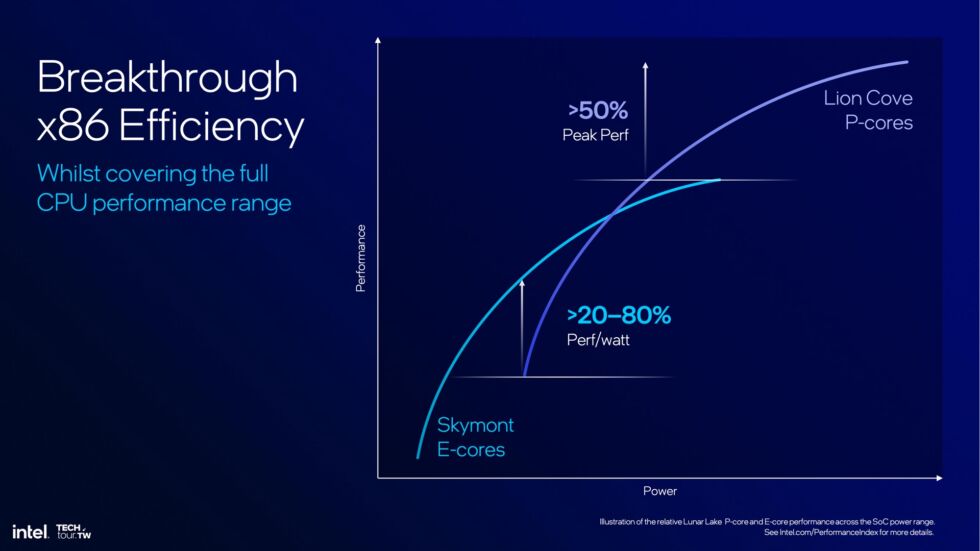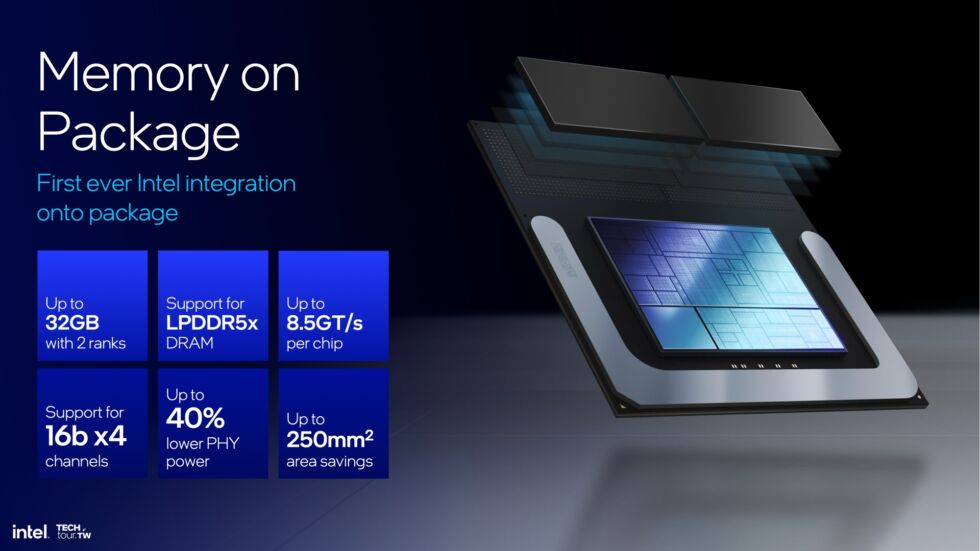more lakes —
Lunar Lake returns to a more conventional-looking design for Intel.

Enlarge / A high-level breakdown of Intel’s next-gen Lunar Lake chips, which preserve some of Meteor Lake’s changes while reverting others.
Intel
Given its recent manufacturing troubles, a resurgent AMD, an incursion from Qualcomm, and Apple’s shift from customer to competitor, it’s been a rough few years for Intel’s processors. Computer buyers have more viable options than they have in many years, and in many ways the company’s Meteor Lake architecture was more interesting as a technical achievement than it was as an upgrade for previous-generation Raptor Lake processors.
But even given all of that, Intel still provides the vast majority of PC CPUs—nearly four-fifths of all computer CPUs sold are Intel’s, according to recent analyst estimates from Canalys. The company still casts a long shadow, and what it does still helps set the pace for the rest of the industry.
Enter its next-generation CPU architecture, codenamed Lunar Lake. We’ve known about Lunar Lake for a while—Intel reminded everyone it was coming when Qualcomm upstaged it during Microsoft’s Copilot+ PC reveal—but this month at Computex the company is going into more detail ahead of availability sometime in Q3 of 2024.
Lunar Lake will be Intel’s first processor with a neural processing unit (NPU) that meets Microsoft’s Copilot+ PC requirements. But looking beyond the endless flow of AI news, it also includes upgraded architectures for its P-cores and E-cores, a next-generation GPU architecture, and some packaging changes that simultaneously build on and revert many of the dramatic changes Intel made for Meteor Lake.
Intel didn’t have more information to share on Arrow Lake, the architecture that will bring Meteor Lake’s big changes to socketed desktop motherboards for the first time. But Intel says that Arrow Lake is still on track for release in Q4 of 2024, and it could be announced at Intel’s annual Innovation event in late September.
Building on Meteor Lake

Enlarge / Lunar Lake continues to use a mix of P-cores and E-cores, which allow the chip to handle a mix of low-intensity and high-performance workloads without using more power than necessary.
Intel
Lunar Lake shares a few things in common with Meteor Lake, including a chiplet-based design that combines multiple silicon dies into one big one with Intel’s Foveros packaging technology. But in some ways Lunar Lake is simpler and less weird than Meteor Lake, with fewer chiplets and a more conventional design.
Meteor Lake’s components were spread across four tiles: a compute tile that was mainly for the CPU cores, a TSMC-manufactured graphics tile for the GPU rendering hardware, an IO tile to handle things like PCI Express and Thunderbolt connectivity, and a grab-bag “SoC” tile with a couple of additional CPU cores, the media encoding and decoding engine, display connectivity, and the NPU.
Lunar Lake only has two functional tiles, plus a small “filler tile” that seems to exist solely so that the Lunar Lake silicon die can be a perfect rectangle once it’s all packaged together. The compute tile combines all of the processor’s P-cores and E-cores, the GPU, the NPU, the display outputs, and the media encoding and decoding engine. And the platform controller tile handles wired and wireless connectivity, including PCIe and USB, Thunderbolt 4, and Wi-Fi 7 and Bluetooth 5.4.
This is essentially the same split that Intel has used for laptop chips for years and years: one chipset die and one die for the CPU, GPU, and everything else. It’s just that now, those two chips are part of the same silicon die, rather than separate dies on the same processor package. In retrospect it seems like some of Meteor Lake’s most noticeable design departures—the division of GPU-related functions among different tiles, the presence of additional CPU cores inside of the SoC tile—were things Intel had to do to work around the fact that another company was actually manufacturing most of the GPU. Given the opportunity, Intel has returned to a more recognizable assemblage of components.

Enlarge / Intel is shifting to on-package RAM for Meteor Lake, something Apple also uses for its M-series chips.
Intel
Another big packaging change is that Intel is integrating RAM into the CPU package for Lunar Lake, rather than having it installed separately on the motherboard. Intel says this uses 40 percent less power, since it shortens the distance data needs to travel. It also saves motherboard space, which can either be used for other components, to make systems smaller, or to make more room for battery. Apple also uses on-package memory for its M-series chips.
Intel says that Lunar Lake chips can include up to 32GB of LPDDR5x memory. The downside is that this on-package memory precludes the usage of separate Compression-Attached Memory Modules, which combine many of the benefits of traditional upgradable DIMM modules and soldered-down laptop memory.